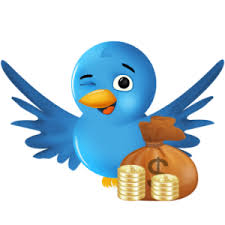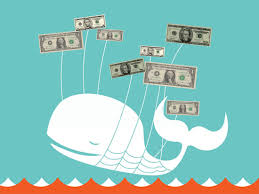I continue to admire the group at Twitter.
According to figures from marketing research firm comScore, Twitter had 22.3 million unique visitors in March 2010 in the United States, up 140% year-over-year. While the company itself usually doesn’t give out numbers, published estimates have Twitter with over 105 million users and 180 million unique visitors a month. Each and every day sees 50-55 million tweets. Astonishing numbers.
 What’s more, defying expectations, the micro blogging service has remained ad-free since its launch in August 2006. An unexpected perk from an offbeat company that’s at last come to an end. In a superbly worded blog post last Tuesday, Biz Stone, a Twitter co-founder, announced the arrival of Promoted Tweets, the company’s first attempt at generating revenue from the wildly popular social networking site.
What’s more, defying expectations, the micro blogging service has remained ad-free since its launch in August 2006. An unexpected perk from an offbeat company that’s at last come to an end. In a superbly worded blog post last Tuesday, Biz Stone, a Twitter co-founder, announced the arrival of Promoted Tweets, the company’s first attempt at generating revenue from the wildly popular social networking site.
The company has already begun testing the new advertising program set to bring relevant ads right into your search results. Clearly labeled as ads, you’ll be able to handle them like any other tweet — retweet, reply or bookmark. Think of these little tweets as working much the way google ads do. The initial phase of the program includes some pretty big league advertising partners — Best Buy, Bravo, Red Bull, Sony Pictures, Starbucks and Virgin America.
Only after the San Francisco based company has found out how well (or not) the ads work will the next phase begin — allowing Promoted Tweets to be shown by Twitter clients and other ecosystem partners. If all continues to go well… eventually the relevant Promoted Tweets will appear right in your timeline.
But before you storm off to join other Twitter users devastated by the change, Twitter insists that the ads must meet a high standard… must resonate with users, and that it will stop showing paid tweets that get ignored. Just imagine if TV ads and radio spots worked that way…
Surprisingly, though about 20% of tweets (one in five) mention a product or service, thus use of Twitter for business varies. In a study of the 100 largest companies in the Fortune 500, 79% of them use Twitter, Facebook, YouTube or a corporate blog to stay in touch, with Twitter being by far the most popular platform.
Among the companies who are using Twitter to promote themselves… hotels and airlines tweet deals and specials. Restaurants and coffee places use the site to connect with customers, offer discounts. There are a number of other companies who are simply keeping track of what’s being said about the firm, it’s products or the industry itself.
Still lots of opportunity here. Like it or not, Twitter has become mainstream.
Promoted Tweets will give companies using Twitter a way to reach a wider audience, upping the likelihood that a tweet has a longer life, and is shared more often than if it had published in a compaqny’s own stream, or seen by only a single group of followers. This means that advertisers will have to work harder than ever to engage their target audience, all in 140 characters, or less. For a creative like me, that’s an exciting challenge.
Those in the know say the trend in advertising with social media is moving from “display” ads toward so-called “engagement’ ads. Create something that interests people, not just screams a message at them. The Starbucks ad is the perfect example of speaking to a fan base with a message that resonates. Ads that bring value directly to the consumer in exchange for their attention offer an experience that’s not just engaging, but likely to be shared. Remember that at it’s heart. Twitter is a community that appreciates thought leadership and value-orientated dialog.
 And while few seem to be able to match Twitter when it comes to popularity, the company does need to find a way to make more money than they have from venture capital and search deals signed with Google, Bing and Yahoo. There are experts who suggest that the new ad program could bring in $100 million dollars in revenue… certainly nothing to scoff at.
And while few seem to be able to match Twitter when it comes to popularity, the company does need to find a way to make more money than they have from venture capital and search deals signed with Google, Bing and Yahoo. There are experts who suggest that the new ad program could bring in $100 million dollars in revenue… certainly nothing to scoff at.
Will Twitter’s new advertising program be effective enough to have companies paying for a featured spot when they can tweet to followers for free? Will the tweeting faithful fly the coop (c’mon, I waited till the end to use any bird reference!) because of the utter disruption of ads becoming part of conversations with contacts and celebrities?
Only time will tell.
Twitter Ads: Value Before Profit
Share on Facebook
Tweet This
Post on LinkedIn


